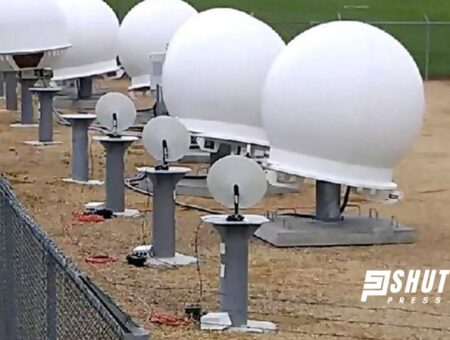Starlink Ground Station is changing how we connect to the internet. Imagine a web so fast it reaches everywhere! Now, let me take you on a journey to discover these technological marvels. Are you curious about where they are and what they do? Keep reading, as you’re about to get the inside scoop!
Starlink Ground Stations are crucial sites spread across the globe, providing the connectivity bridge between satellites in orbit and our devices on Earth. These stations receive signals from space and send them back out so people like you and me can enjoy blazing-fast internet. From remote rural areas to bustling cities, Starlink’s network makes sure everyone stays connected.
Starlink Ground Station Overview
The Starlink ground station plays a crucial role in bridging the gap between high-flying satellite constellations and the terrestrial internet infrastructure. This strategic linkage enables the harnessing of space-based internet service, bringing high-speed connectivity to even the most remote corners of the globe.
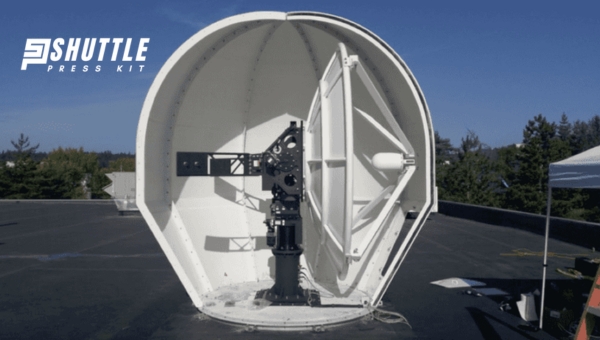
At its core, each ground station is equipped with advanced technology including highly sophisticated antennas that employ phased array and beamforming methods. These technologies facilitate constant, stable communication with satellites whizzing through orbit, ensuring users on Earth can enjoy uninterrupted internet access.
Within these ground facilities lies a complex system engineered for precision and reliability. Tracking and aligning with satellites in real-time requires intricate mechanisms for monitoring trajectories.
The stations employ precise tracking systems that maintain a lock on each satellite’s position, guaranteeing seamless data transmission as satellites move across the sky. Additionally, comprehensive telemetry and control operations within these stations provide vital data on satellite health and network performance, enabling preventive maintenance measures and swift troubleshooting to uphold service integrity.
Also Read: Low Capacity vs High Capacity Starlink: Optimize Your Choices
Essential Elements of a Starlink Ground Station
Starlink, known for its initiative to provide global broadband coverage through its satellite constellation, relies heavily on ground stations. These stations are integral for maintaining the link between satellites in orbit and the end-users on Earth. Here’s an outline of the crucial components that make Starlink ground stations operational and efficient:
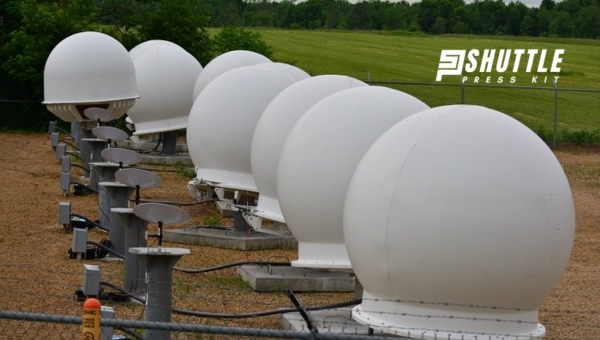
- Phased Array Antenna Systems: The backbone of each station, these antennas enable precise tracking and communication with satellites in orbit. Their advanced technology allows for dynamic beamforming, essential for high-speed data transmission.
- Satellite Tracking Mechanisms: These sophisticated systems ensure continuous alignment with the orbiting satellites, adjusting in real-time to their positions. This functionality is vital for maintaining an uninterrupted connection.
- Signal Processing Units: Responsible for handling data exchange between satellites and terrestrial networks, these units decode incoming signals from space and encode outgoing signals from Earth, ensuring clarity and efficiency in communications.
- Telemetry & Control Operations: These systems monitor the health and status of both ground station equipment and the satellite fleet, allowing remote adjustments to optimize performance and diagnose issues quickly.
- Network Management Software: Central to coordinating network activities, this software manages bandwidth allocation dynamically responds to network demands, and ensures optimal user experiences by analyzing performance in real-time.
By integrating these components into a harmonious operational framework, Starlink ground stations play a pivotal role in delivering high-speed internet across globe-spanning areas previously underserved by traditional connectivity solutions.
Also Read: Starlink Cable Routing Kit: Easy Install Guide!
Overview of Starlink Network Infrastructure Sites
Starlink, a satellite internet constellation developed by SpaceX, aims to provide high-speed internet globally, especially in underserved areas. An essential component of this network is its ground stations. These sites are strategically positioned worldwide to communicate with Starlink’s satellites orbiting Earth. They play a critical role in managing data flow between the satellites and users’ terminals, ensuring connectivity and service quality.
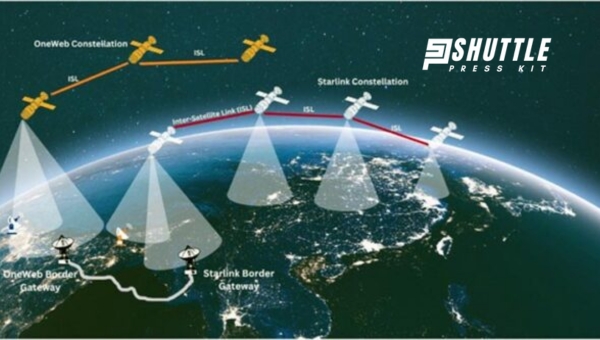
Africa
In Nigeria, the operational ground stations include Ikire and Lekki.
Asia
Japan hosts several facilities such as Akita, Hitachinaka, Otaru, and Yamaguchi. The Philippines has an active site in Angeles.
Central & North America
Canada’s functioning gateways are located in Marathon (Ontario), Saguenay (Quebec), Sambro Creek (Nova Scotia), and St Johns (Newfoundland). The Dominican Republic’s Santiago de los Caballeros is live. Mexico boasts multiple locations including Cabo San Lucas and Monterrey among others. Puerto Rico features Ponce and Toa Baja as operational sites.
United States
A wide array of ground station sites spread across the US from Adelanto, California; Brewster, Washington; Boca Chica, Texas; Fairbanks, Alaska; to Merrillan, Wisconsin highlighting the extensive coverage provided by Starlink within the country.
Europe
Ground stations are also established firmly across Europe with France hosting Villenave d’Ornon; Germany featuring Aerzen and Frankfurt; Italy having Foggia among others; Norway with Tromsø active for superior coverage in northern latitudes.
Far East & Middle East
Oman’s Murayjat and Turkey’s Muallim showcase Starlink’s reach extending into critical junctions for east-west connectivity.
Oceania
Australia demonstrates diversified locations including Boorowa to aid its vast landscape while New Zealand boasts Awarua among its enlisted infrastructure boosters.
South America
Broadening its footprint further south includes Argentina’s Falda del Carmen as well as numerous sites throughout Brazil like Camaçari guaranteeing South American consumers access to high-speed internet services.
Also Read: Starlink Dimensions Simplified: Nail Your Satellite Setup
Capabilities of Starlink Ground Stations
Starlink ground stations, integral components of the satellite internet infrastructure, play a pivotal role in maintaining the link between space-based satellites and users on Earth.
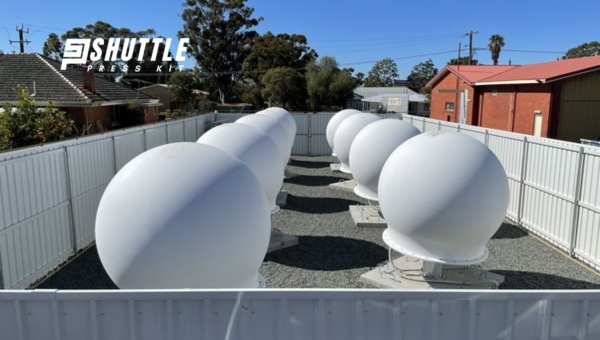
These stations are equipped with advanced technology to support high-speed internet services across the globe. Here’s a glimpse into their key functionalities:
- Bidirectional Data Transmission:
- Facilitate the sending and receiving of data between Earth and the orbiting satellites, acting as a critical bridge for internet connectivity.
- Signal Optimization:
- Implement sophisticated signal processing techniques for decoding and encoding data, ensuring efficient communication with minimal errors.
- Network Management:
- Optimize data routing and bandwidth allocation, enhancing network performance and minimizing latency for an improved user experience.
- Telemetry Monitoring:
- Continuously assess satellite health and performance through real-time telemetry data, enabling proactive maintenance and optimization.
- Satellite Tracking:
- Employ precise systems to track satellite positions for optimal antenna alignment, ensuring uninterrupted connectivity as satellites move across the sky.
- Security Protocols:
- Implement robust security measures including encryption and authentication to protect user data from unauthorized access or cyber threats.
These core capabilities underscore how Starlink ground stations are essential to delivering fast, reliable satellite-based internet services worldwide.
Also Read: Starlink vs HughesNet: Which Wins the Satellite Battle?
Frequently Asked Questions
What is a Starlink ground station?
A Starlink ground station is a terrestrial facility that communicates with the Starlink satellites to enable internet connectivity.
Where are Starlink ground stations located?
Starlink ground stations are strategically located around the world to provide global coverage and connectivity.
How do Starlink ground stations work?
Starlink ground stations transmit and receive signals to and from the Starlink satellites in orbit through radio frequency technology.
Can individuals access Starlink ground stations?
Starlink ground stations are not accessible to the public and are operated and managed by SpaceX for the Starlink satellite internet service.
Conclusion
Starlink, the satellite internet constellation brought forth by SpaceX, fundamentally changes the landscape of global internet connectivity. With its rapidly increasing number of ground stations scattered across diverse geographical locations, Starlink promises an unprecedented level of broadband service to even the most remote areas on Earth.
These ground stations are crucial as they serve as the backbone for this ambitious network, ensuring data is relayed between satellites in orbit and users on the ground efficiently. As more stations are built and technology evolves, we can expect even greater coverage and speed enhancements, potentially making digital divides a thing of the past.
